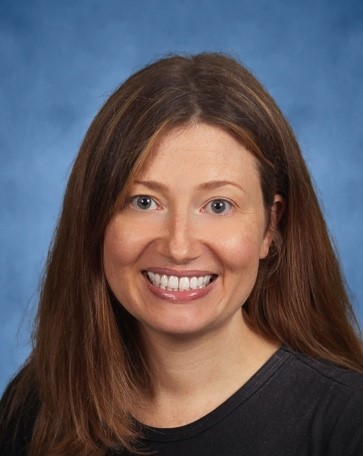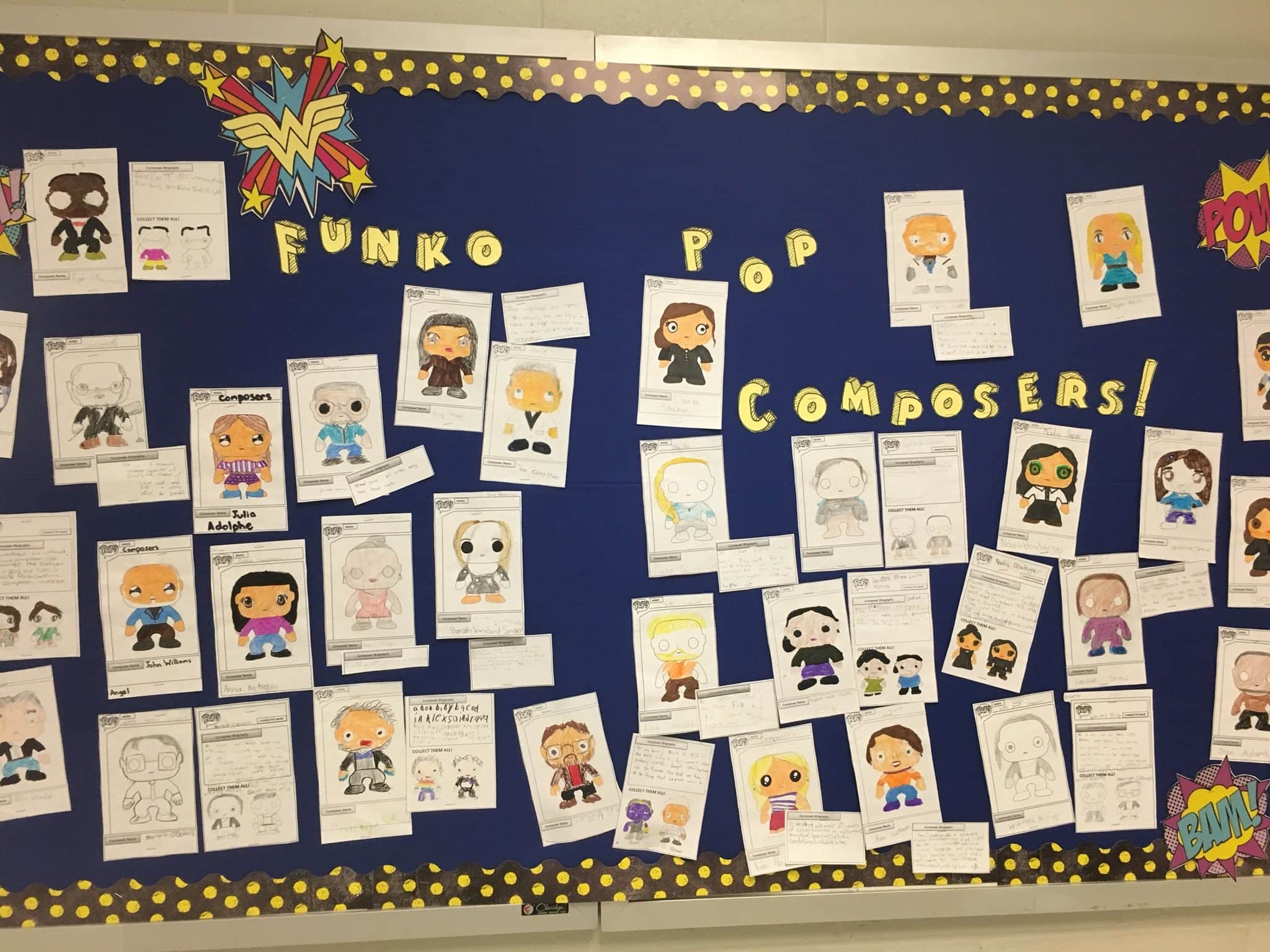/ News Posts / It’s Elementary! Women Composers in K-5 Music Classrooms
It’s Elementary!
Women Composers in K-5 Music Classrooms
By NAfME Member Miriam Capellan
This article first appeared on the “Dear Clara” blog.
What is a composer? What does a composer look like? Where do they come from? These are some questions a teacher might ask their students in any K–5 general music classroom.
But what picture do we paint for students about composer identity with the listening repertoire we expose them to?
So many people still picture a white man in a puffy wig and maybe a ruffled shirt when they think of a “composer.” Are we as music educators doing enough to counteract this image? If not, what resources can help us to do so?
Often, elementary listening resources are exclusively devoted to male composers or include only one or two token women composers. Our elementary learners (future musicians and arts supporters) are left to assume that there are few, if any, women composers in our collective canon. Many of us grew up believing this myth as well, but the good news is—it is untrue! There are many, many outstanding women composers, past and present, that we can and should be exposing our students to.
Now for the hard part: This may take a bit of digging and research. That is because, unfortunately, women and BIPOC composers (Black/Indigenous/People of Color) are still chronically underrepresented in the classical music world. However, if teachers know where to look, they can find an abundance of great information that will help enrich their listening repertoire and provide students with a balanced and inclusive classroom experience.
Five Fantastic Resources
Daffodil Perspective: This weekly podcast is a labor of love for UK musicologist Elizabeth de Brito. Each show is a fascinating dive into the works and stories of lesser-known women composers and composers from underrepresented groups. De Brito has an incredible talent for uncovering stories that make a listener say, “Well, of course, women were always involved in composing and promoting classical music—we just haven’t heard their stories.” In my favorite episode, de Brito seamlessly weaves stories of the enormously influential Princess Wilhelmine von Bayreuth into a musical journey covering four centuries.
Institute for Composer Diversity: A website boasting multiple comprehensive databases, the Institute is a clearinghouse for teachers and musicians interested in promoting diverse musical experiences for all learners and audience members. The databases are simple enough for students as young as 4th grade to explore. An elementary teacher might assign a guided composer research project for a 4th or 5th grade class. Database search options include search by gender (non-binary, female, and male), country of origin, ethnicity, genre, and instrumentation.
Do you have a student from a Middle Eastern background who would like to find out about women composers from the Middle East writing for video games? There’s a search for that.
How about a student who wants to see if there are Mexican-American composers writing film music, past and present?
My students enjoyed searching for composers and creating their own “Funko Pop” composer action figures based on their findings. In addition to the databases, the Institute actively works to promote equity and diversity in many facets of education and performance, including K–12 through higher ed and professional performance ensembles. Resources on the site itself include talking points and standards for program planning with diversity in mind. Additionally, the Executive Council is a group of professionals active in the field who can also be tapped as resources. Included in the extensive list of council members are musicologists like Dr. Matthew D. Morrison, who specializes in the Black musical experience, and teachers like Amy Rever, who works to promote diversity in state band lists.
Exposure TV: A brand new resource, Exposure’s online platform is an offshoot of the Institute for Composer Diversity and promises to deliver excellent information and viewing for both teachers and students. In its first broadcast, executive producer Chelsea Daniel explains that she started Exposure TV because as a young musician of color, she had very few examples of other musicians and composers who looked like her. The mission of Exposure TV is to create a video platform in which students from groups historically underrepresented in classical music can see young performers like them and performances featuring works from women and BIPOC composers.
Check out the YouTube channel where you can see episodes like the one with young flautist Zoe Cagan performing “Tuhuayo” by Peruvian composer Daniel Cueto and “Mariposa” by African American composer Valerie Coleman. Video descriptions include social media contacts and platforms for young musicians and web links to learn more about the featured composer.
I Care If You Listen: Following “I Care If You Listen” on social media is a constant source of new information on current performances and new works of a very diverse group of composers. The website itself is both a blog and video platform. Updated with new content several times a week, its editor Amanda Cook, and video curator Evan Williams consistently provide their readers with brief yet informative articles and videos on the cutting edge of the new music scene. Special attention is given to BIPOC and women composers on the site. It’s an engaging resource that will keep any music educator current on the latest happenings in new music from diverse performers and composers.
Spotify: Just a few years back there was quite a bit of buzz about a certain Spotify playlist: 1200 Years of Women Composers. The playlist includes more than EIGHTY-TWO HOURS of music by women composers from Hildegaard von Bingen to Hilda Paredes (yes, eighty-two hours). In addition to this extensive list, there are a substantial number of composers and musicologists with public playlists: excellent sources of expert-curated listening repertoire. Use the streaming service to search a composer you find in the Institute for Composer Diversity database or follow the Twitter-famous “Musicology Duck” or the Daffodil Perspective’s Elizabeth de Brito and check out what they are listening to. With just a few clicks, an elementary teacher can create their own playlist full of stunning recordings by women composers to share with their students.
Extra Credit: Twitter!
Social Media platforms like Twitter are a wonderful resource for teachers wanting to learn more about both the new music scene and gender-inclusive musicology. Why not become a teacher-musicologist and follow some of the people on this list?
| Samantha Ege | @samantha_ege | Musicologist, pianist, educator |
| Musicology Duck | @MusicologyDuck | Musicologist, not really a duck? |
| Matthew D. Morrison | @DrMaDMo | Musicologist, violinist, writing a book on blackface and blacksound |
| Doug Shadle | @DougShadle | Chair of Musicology, Vanderbilt U, researching Florence Price |
| Brian Lauritzen | @lauritzen_brian | Radio host, KUSC |
| Rob Deemer | @robdeemer | Composer, professor of composition, and founder of @composerdiversity |
| New York Times Arts | @nytimesarts | Great source for Arts News |
| Guggenheim Museum | @guggenheim | Innovative programming in its arts spaces, championing diversity |
| Anne Midgette | @classicalbeat | former classical music columnist for the Washington Post |
| Nia Imani Franklin | @niathenote | Composer and former Miss America, found of ComposeHer.org |
| The Daffodil Perspective | @daffodilmusic | Podcast by Elizabeth de Brito |
| Dr. Imani Mosley | @imanimosley | Professor at Wichita State U, musicologist |
| Isata Kanneh-Mason | @IsataKM | Pianist, recently released album is a tribute to Clara Schumann, sister to cellist @ShekuKM |
| Chineke! Foundation | @Chineke4Change | Championing change and celebrating diversity in classical music |
| Rhiannon Giddens | @RhiannonGiddens | MacArthur Genius Award winner, performer |
| Dr. Erin K Maher | @MaherEK | Musicologist and Academic editor |
| Dr. Kendra Preston Leonard | @K_Leonard_PhD | Musicologist, theorist, and librettist |
| Dr. Laura Watson | @lauracwatson | Musicologist, Paul Dukas, women in music |
| Missy Mazzoli | @missymazzoli | Composer |
| Jennifer Stumm | @JenniferStumm | Violist and advocate for women’s compositions |
| Rosśa Crean | @RossaCrean | Composer, contemporary music advocate, nonbinary |
| SalonW’outBoundaries | @SalonRebooted | Social media platform sharing diverse content |
About the author:
 Miriam Capellan is a PreK-5 vocal/general music teacher in Arlington, Virginia. She earned her bachelor’s in music education from Boston University, a master’s degree in education from Lesley University, and is currently working towards a master’s in music education with a Kodály emphasis at Silver Lake College in Wisconsin. Miriam has been a vocal music specialist for 16 years, teaching in Massachusetts, Maryland, and now Virginia. She is a National Board Certified Teacher and a Kennedy Center Changing Education through the Arts (CETA) certified educator. Miriam has recently joined the Executive Advisory Council for the Institute for Composer Diversity @composerproject and is active on Twitter using the handle @choralmiriam.
Miriam Capellan is a PreK-5 vocal/general music teacher in Arlington, Virginia. She earned her bachelor’s in music education from Boston University, a master’s degree in education from Lesley University, and is currently working towards a master’s in music education with a Kodály emphasis at Silver Lake College in Wisconsin. Miriam has been a vocal music specialist for 16 years, teaching in Massachusetts, Maryland, and now Virginia. She is a National Board Certified Teacher and a Kennedy Center Changing Education through the Arts (CETA) certified educator. Miriam has recently joined the Executive Advisory Council for the Institute for Composer Diversity @composerproject and is active on Twitter using the handle @choralmiriam.
Did this blog spur new ideas for your music program? Share them on Amplify! Interested in reprinting this article? Please review the reprint guidelines.
The National Association for Music Education (NAfME) provides a number of forums for the sharing of information and opinion, including blogs and postings on our website, articles and columns in our magazines and journals, and postings to our Amplify member portal. Unless specifically noted, the views expressed in these media do not necessarily represent the policy or views of the Association, its officers, or its employees.
Published Date
December 18, 2019
Category
- Gender
- Repertoire
- Representation
Copyright
December 18, 2019. © National Association for Music Education (NAfME.org)







